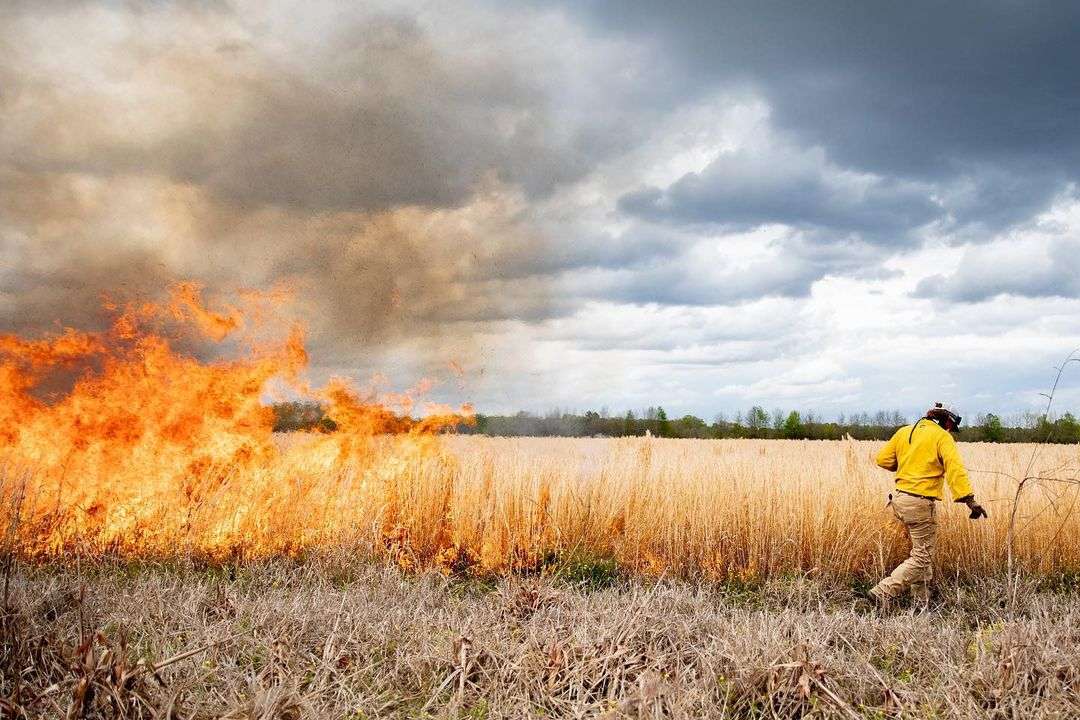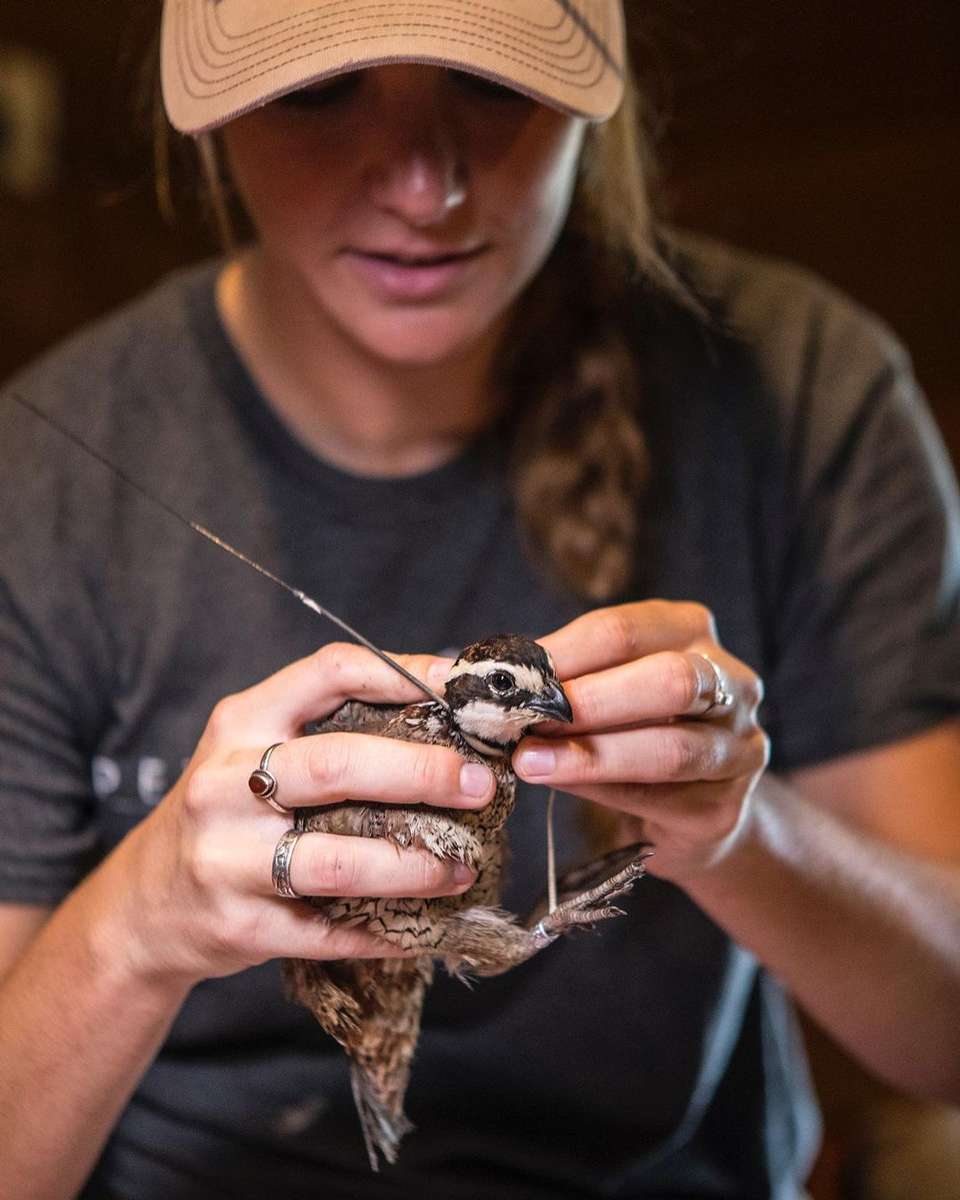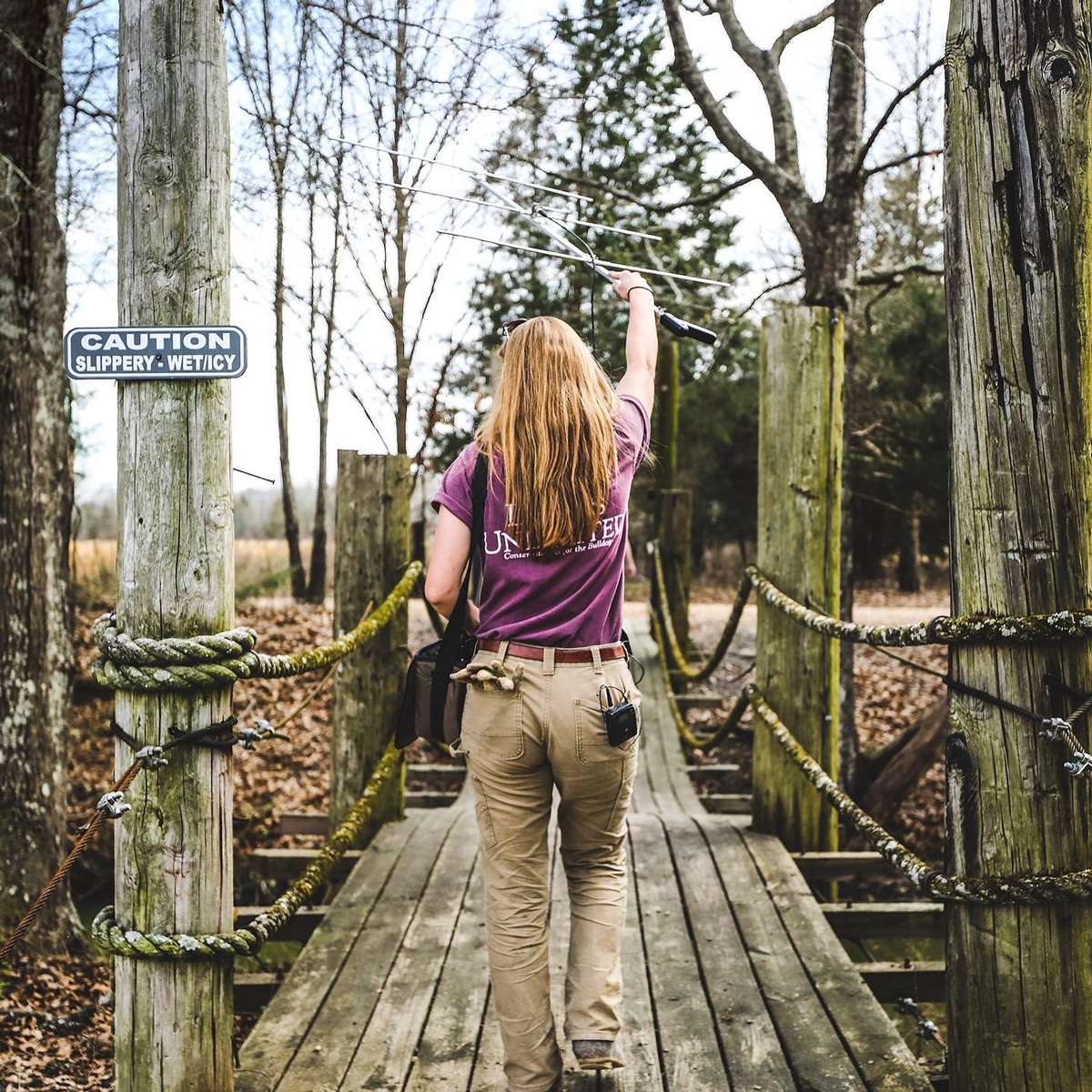
Conservation - Prairie Wildlife

Our Conservation Efforts
Grasslands constitute the most imperiled and least protected biome in North America with the native prairie having declined rapidly in the late nineteenth and twentieth centuries. In Mississippi, tall grass prairies are one of the most endangered ecosystems.
Comprehensive conservation planning has been the cornerstone of the Prairie Wildlife land management philosophy. We have restored more than 900 acres of historic native grasslands. Our efforts have involved defining specific resource concerns (soil, water or wildlife), identifying conservation practices to improve ecosystem health, implementing those practices and evaluating the responses. Prairie Wildlife continues to apply this iterative approach in an adaptive resource management framework.
Our methods include:
- Eradicating invasive plants. We replace fescue and Bermuda grasses with native warm season grasses, more wildlife-friendly plants.
- Fencing drainages to keep cattle out. This specifically provides travel corridors and bedding cover for White-tailed deer and drastically reduces erosion.
- Planting native grass borders around crop fields. Native grasses create nesting habitat, brood rearing habitat, seed for food and year round protection for all wildlife as well as greatly reducing erosion. Planting shrub corridors. Hedge rows break up large fields, connect scattered patches of habitat and provide travel corridors and bedding spaces for wildlife.
- Hinge cutting hedge rows. This practice provides more cover at the ground level and reduces the number of perches used by hawks that feed on quail.
- Burning native grass fields and fall strip disking. The goal of these actions is to build up dead plant material at ground level, making a more open stand of grass for wildlife, like bobwhite quail, to move freely. It also stimulates the germination of seed-producing forbs and promotes new growth.
- Managing existing and new food plots. This practice provides vast amounts of food for the winter months for all wildlife species.

Our Sporting Traditions
Development, lack of game, less land and more pollution are a few factors influencing the decline in our sporting ways today. We at Prairie Wildlife are leading the efforts to ensure the continuous existence of our valued sporting traditions for future generations by engaging in visionary conservation efforts and dedicated community involvement. We participate in statewide and national educational events, host youth events onsite and share with our guests the reality of the situation. By offering unparalleled experiences afield and working with local businesses and conservation experts we are raising awareness of the need for preservation. Over 80 percent of every dollar earned at Prairie Wildlife goes directly toward preserving our threatened ecosystem.
Bryan-Burger Endowment
The Bryan-Burger Endowment for Bobwhite Habitat Restoration, established at Mississippi State University’s College of Forest Resources, will help build upon the model established at Prairie Wildlife. Owner Jimmy Bryan and associate director of the Mississippi Agricultural and Forestry Experimentation Station and the Forest and Wildlife Research Center Wes Burger have collaborated to bring native habitats back to the Black Prairie at Prairie Wildlife.
The practices set in place at Prairie Wildlife implement a host of conservation practices that minimally impact crop and livestock production. Over the past 19 years results of research conducted at this working lands laboratory has helped shape the standards of modern land management. Fourteen MSU students have conducted graduate research here.
This newest endowment compliments other generous donations made by the Bryans to MSU including a number of scholarships, the donation of land to the MSU Extension Service’s 4-H Youth Complex in Clay County, student awards and an endowed externship at the College of Veterinary Medicine.
Publications
CP33 National Monitoring Report 2006-2008
CP33 Mississippi Monitoring Report 2006-2008
Evaluating Pre-Emergence Herbicides For Establishing Native Grasses and Forbs
Economic Impact of Conservation Field Borders on Farm Operations
Bobwhite Populations in the Southeast: What can we Expect From Habitat Management
Conservation Buffers Program Benefits Grassland Birds – Bird Conservation Winter 2006/2007
Successful Wildlife Management On a Working Farm: A Case Study
Creating Early Successional Wildlife Habitat through Federal Farm Programs
Conservation Buffers: Wildlife Benefits in Southeastern Agricultural Systems
Grassland Bird Response to Agricultural Field Borders
Multi-Resolution Approach to Wildlife Habitat Modeling Using Remotely Sensed Imagery
General Wildlife Habitat Management Practices Being Implemented on Prairie Wildlife
Bobwhite Management on a Small Property: A Case Study Wildlife Trends Sept/Oct 2008
Native Warm-Season Grass Establishment and Restoration in Mississippi
Conservation Reserve Program Mid-Contract Management
Creating Wildlife Habitat Through Federal Farm Programs: An Objective-Driven Approach
The Role of Farm Policy in Achieving Large-Scale Conservation: Bobwhite and Buffers
Prescribed Burning Safely and Legally
Planning and Prioritization of Northern Bobwhite Habitat Restoration in Mississippi
Pine Forestland Habitat Management for Wildlife
Effects of Herbaceous Field Borders on Farmland Birds in the Mississippi Alluvial Valley
The Conservation Reserve Program in the Southeast: Issues Affecting Wildlife Habitat Value
The Conservation Reserve Program in the Southeast: Issues Affecting Wildlife Habitat Value

